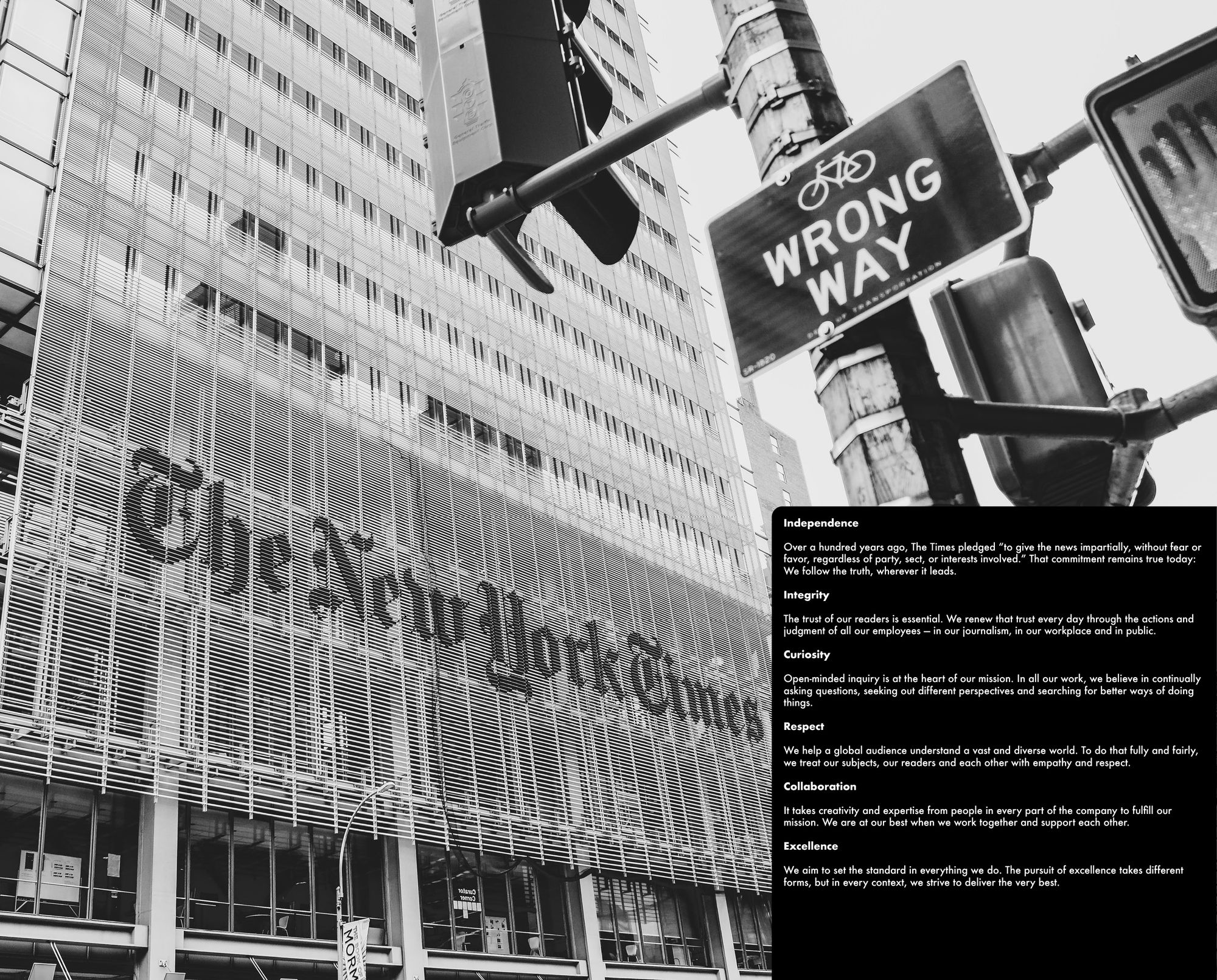How The New York Times transformed itself into a modern media brand
The journey from leading US-based newspaper business to a global media brand.
Few industries have endured as much disruptive change as the media industry.
Every publication these days faces exponential challenges on multiple fronts to their long-term sustainability - digitisation, changes to the ad industry, a lack of public trust in the media and a continued explosion of competition are just some of the radical forces of change that are killing off magazines, radio stations, newspapers, TV channels; and leaving those that somehow survive to fight for the scraps that are left behind.
This fragmentation of media is a slow implosion that has been going on since the dawn of commercial blogging in 2004.
A few years ago, The New York Times - a 170 year old global media brand was facing a harrowing truth of their own.
Circulation of their print edition was dwindling to unsustainable levels, ad revenues were under increasing threat and 'readers' were quickly migrating to other free online sources of news as the tide turned on the newspaper industry.
Having embarked on numerous strategies to turn the tide over the years (which hadn't turned the business around financially) and facing the reality of probable financial collapse, The New York Times chose instead to embark of a journey of strategic transformation to radically reimagine their entire business from the ground up.
When incremental change over time doesn't produce the results that you want - it's most probably then a good time to commit to a holistic, strategic transformation of the business.
Here's what they did...
- They redefined their vision of the future

A compelling future vision of what the company wants to ultimately achieve is a vital rallying asset on which to secure a successful transformation strategy. It is essentially the starting point from which the rest of the strategy unfolds.
The New York Times offered a new vision for the brand - to become the essential subscription for every curious, English-speaking person seeking to understand and engage with the world.
What's useful about this vision is that it clearly outlines the importance of their new primary business model - subscriptions - and leaves no doubt as to who the most important people are - English-speaking persons - and what behavioural characteristics they display - seeking understanding and engagement with the world.
That's a major shift away from pandering to advertisers, targeting an American-only audience with a print product that just offers 'readers' the latest news.
The new vision opens up the brand to new opportunity - a bigger subscription audience, a more direct revenue model and the permission to lock in retention by promising deeper and wider layers and channels of journalistic excellence.
The sentence is simple, but in its simplicity lies its power.
Far too many strategy documents, and the thinking behind them, are just too complex to be practically useful. Traditional management consultants are particularly guilty of stuffing endless pages of PowerPoint pitch deck with information - making them look like they have justified their exorbitant fees, but ultimately nullifying the value of the exercise in the process.
2. They reconfirmed their core brand positioning

Just in case there was any doubt as to exactly what makes The New York Times unique - they made a firm recommitment to being the world's #1 news journalism brand. This is obviously a traditional strength of the brand, but in a radical transformation process, it is advisable to careful bank your inherent brand strengths and use them as a key leverage point for all transformative redesign.
3. They chose to retain their core business - even though the numbers are against it

Even though advertising sales are down and fewer and fewer people are buying a physical, printed newspapers these days; the strategy does not do away with these traditional aspects of the business.
Although there is limited future revenue potential from the traditional drivers of the business, in many ways they are key aspects of the unique NYT brand that digital-only competitors strategically do not have in their arsenal.
4, They innovated their business model

The advertising-driven print newspaper business model is very different to the direct, subscription-focused, digital news platform model.
The latter opens up global opportunities to a much wider audience and the direct digital nature of the relationship with readers gives the NYT unprecedented data and consumer insights as to what readers value in their daily read; something they would clearly not have had previously.
By innovating their entire business model - The New York Times is able to maximise the leverage of its immense historical brand power in combination with the accuracy of delivery and relationship-building through their investments in new technology. Simply adopting the technology without innovating their business model would not have brought about the strategic impact and financial success that they are now achieving.
In conclusion
The NYT is now focused on new business objectives - to attract, retain and monetize subscribers and drive profitable growth towards a goal of 15 million subscribers by the end of 2027.
From a local and regional newspaper to a global media brand - The New York Times have taken a bold step to let go of the past and rather map out a new path into the future for their business.
As we all know by the failure statistics of their media contemporaries - this is not an easy set of decisions to commit to, but a confident move that will most certainly yield dividends into the future.
More:

Related:






